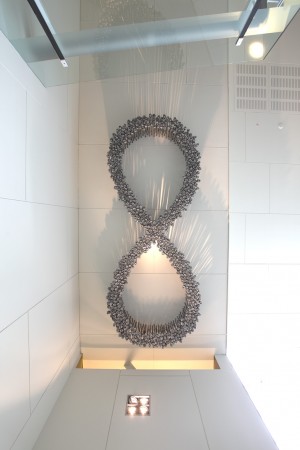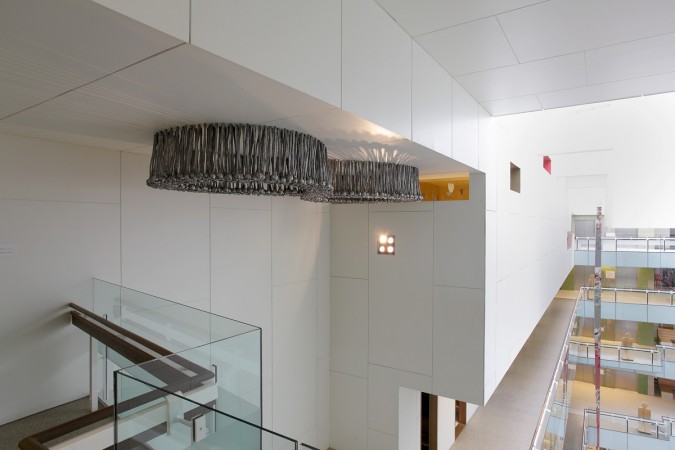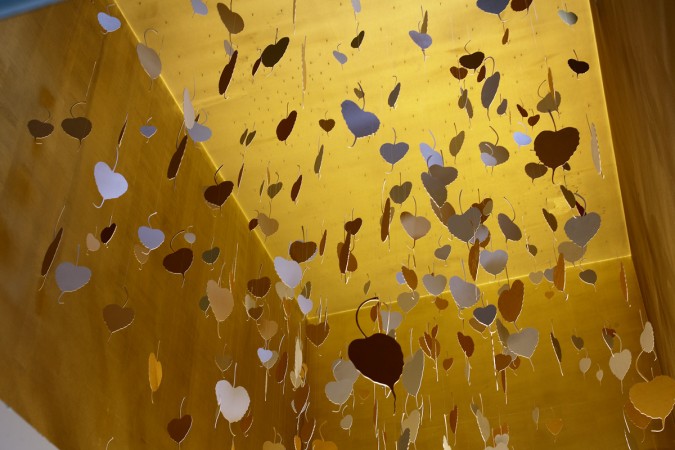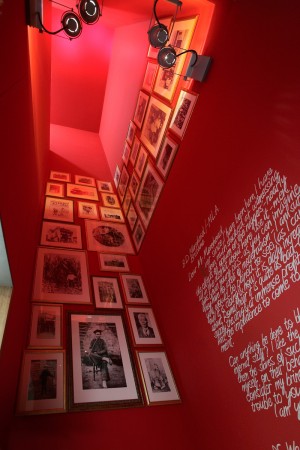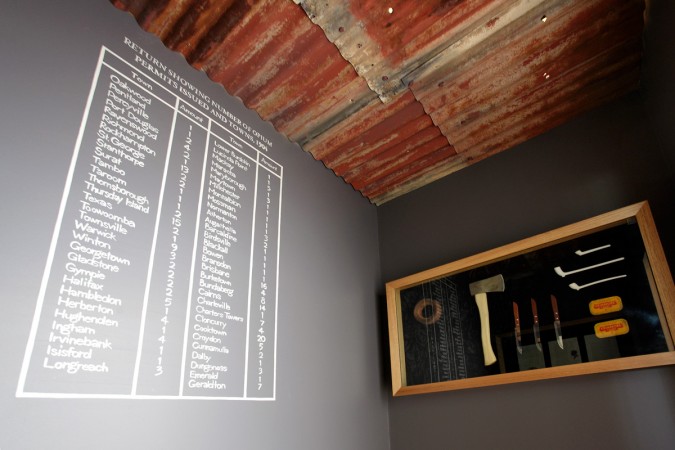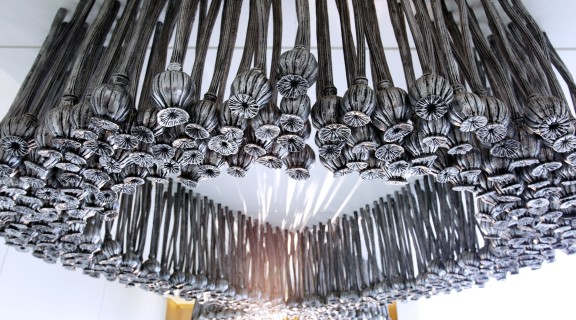
- Home
- Black Opium by Fiona Foley
/
Black Opium by Fiona Foley
Description
Black Opium is located on level 4 and acts as a prelude to the John Oxley Library.
Suspended poppy heads arranged in the shape of the infinity symbol connect to a series of seven small rooms representing different ambiances and cultures, exploring themes of history, memory and politics through sculptural installations and photographs.
Foley's visually seductive work leads visitors on a journey through a little known part of the state's history. Her work is layered with meaning, revealing a time when Aboriginal people were often paid for their labours with opium, robbing them of their health, and in some cases, their lives.
Background
Black Opium was commissioned as part of State Library's 2006 redevelopment and was designed to draw visitors along the Knowledge Walk.
Foley says her work gives Queenslanders an opportunity to confront and understand parts of their history.
In the process of creating this public artwork Fiona Foley researched Aboriginal and Chinese related collections in the John Oxley Library.
Foley's artistic concept was inspired by the book, 'The Way We Civilise: Aboriginal Affairs - The Untold Story' (1997) by Rosalind Kidd, and the Aboriginals Protection and Restriction of the Sale of Opium Act 1897. Foley, an Adjunct Professor with the Queensland College of Art at Griffith University said "This piece of legislation passed in 1897 and the subsequent amendments in 1901 affected so many Chinese and Aboriginal people's lives in Queensland. The story that unfolds through the reading rooms and Black Opium sculpture is a hint of this history".
The Queensland Government of the time commissioned Archibald Meston to look at the problems affecting the health of Aboriginal people, resulting in the Aboriginals Protection and Restriction of the Sale of Opium Act 1897. Foley was intrigued to find the words "aboriginals and opium" together in the wording of an act of parliament, leading her to further investigate the story behind it. The act allowed Aborigines to be "forceably removed" to missions, quarantined from townsfolk as some considered the heartbreaking sight of Aboriginal people afflicted by opium addiction an "eyesore". Missions like Palm Island and Yarrabah were set up under this new practice of social experimentation and racial eugenics. "This history is not taught in schools."
State Library Collections
Listen to Fiona Foley talk to Louise Martin-Chew about her life as an artist and the influences on her practice including her sense of justice, desire to tell the hidden histories, her family memories and her love for Aboriginal culture.
To see other interviews with Fiona Foley, view the James C Sourris AM Collection artist interview series in One Search.
Further information and resources relating to Fiona Foley can be found in our collections.
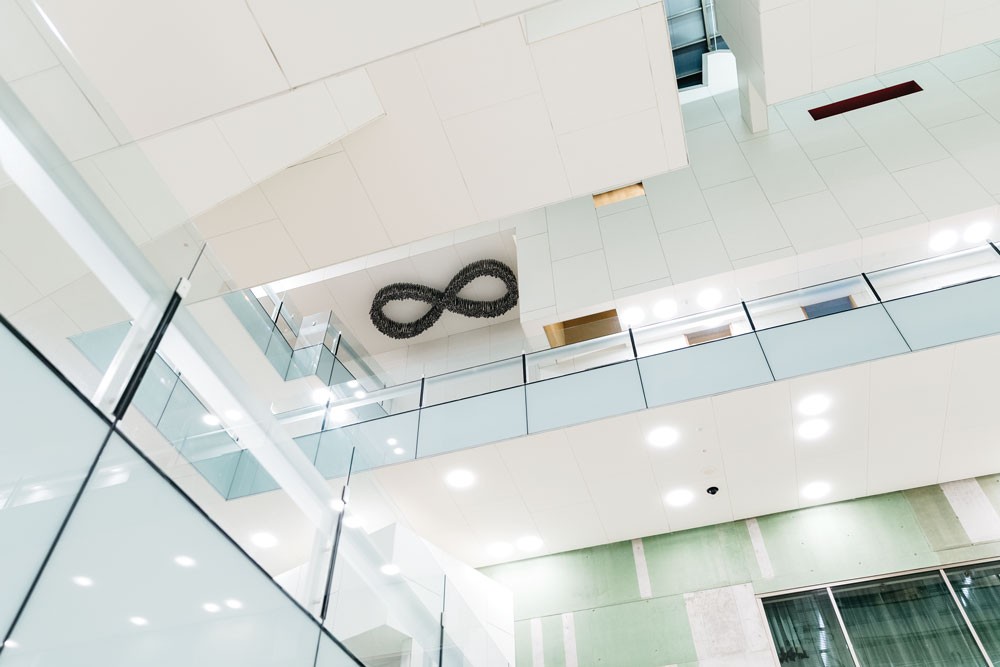
Related Essays
Opium and race relations in Queensland [PDF 66.6 KB]
by Andrew Gillett, Macquarie University
PDF · 68 KB
Under the Act: a poisoned chalice [PDF 50.2 KB]
by Louise Martin-Chew
PDF · 51 KB
Fiona Foley and her fearful symmetry [PDF 68.4 KB]
by Alison Kubler
PDF · 70 KB
Art + Architecture [PDF 29 KB]
by Timothy Hill
PDF · 29 KB
